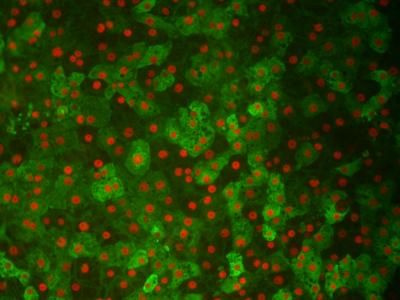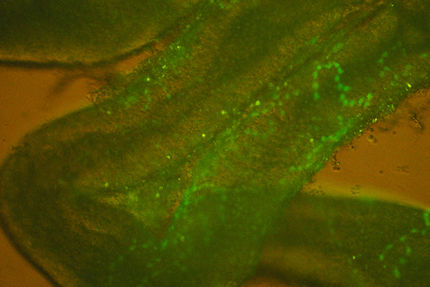Scientists Map Epigenome of Human Stem Cells During Development
Billions of Data Points Provide Big Picture of “Human Epigenome” During Critical Developmental Window
Advertisement
Scientists at The Genome Institute of Singapore (GIS) and The Scripps Research Institute (TSRI) led an international effort to build a map that shows in detail how the human genome is modified during embryonic development. This detailed mapping is a significant move towards the success of targeted differentiation of stem cells into specific organs, which is a crucial consideration for stem cell therapy. The study was published in Genome Research.
Senior author and Senior Group Leader at the GIS, a biomedical research institute of the Agency for Science, Technology and Research (A*STAR), Dr Chia-Lin Wei said, “In this study, we mapped a major component of the epigenome, DNA methylation, for the entire sequence of human DNA, and went further by comparing three types of cells that represented three stages of human development: human embryonic stem cells, human embryonic stem cells that were differentiated into skin-like cells, and cells derived from skin. With these comprehensive DNA methylome maps, scientists now have a blueprint of key epigenetic signatures associated with differentiation.”
“The cells in our bodies have the same DNA sequence,” said TSRI Professor Jeanne Loring, Ph.D., who is a co-senior author of the paper with Isidore Rigoutsos of IBM Thomas J. Watson Research Center and Chia-Lin Wei. “Epigenetics is the process that determines what parts of the genome are active in different cell types, making a nerve cell, for example, different from a muscle cell.”
DNA methylation causes specific subunits of DNA to be chemically modified, which controls which areas of the genome are active and which ones are dormant. DNA methylation is critical to the process in which embryonic cells change from ‘pluripotent stem cells’, which have the ability to turn into hundreds of cell types, to ‘differentiated cells’, distinct types of cells that make up different parts of the body, such as the skin, hair, nerves, etc.
In reviewing the data produced by the study — information on the methylation of three billion base pairs of DNA — the scientists were able to identify previously unknown patterns of DNA methylation. They identified cases where DNA methylation appeared to enhance, rather than repress, the activity of the surrounding DNA, and found evidence to suggest a role for DNA methylation in the regulation of mRNA splicing.
“We produced a very large amount of data,” said Loring, “but it actually simplifies the picture. We identified patterns of many genes that are methylated or de-methylated during differentiation. This will allow us to better understand the exquisitely choreographed changes that cells undergo as they develop into different cell types.”
Louise Laurent of Scripps Research and the University of California, San Diego, one of the first authors of the study, added, “The data are publicly available, and we are looking forward to learning what other scientists discover from using this information for their own studies on individual genes, embryonic development, and stem cells.”
“This is definitely an exciting finding in the field of stem cell research,” added co-first author Eleanor Wong, who is a graduate student from the GIS in Dr Wei’s lab. “Using this knowledge, scientists can now survey different cell types and developmental pathways, identify the genes affected, and characterize the functions of these genes in the process of differentiation. It’s all very exciting!”
Original publication: Louise Laurent, Eleanor Wong, Guoliang Li, Tien Huynh, Aristotelis Tsirigos,Chin Thing Ong, Hwee Meng Low, Ken Wing Kin Sung, Isidore Rigoutsos, Jeanne Loring, Chia-Lin Wei; “Dynamic changes in the human methylome during differentiation”; Genome Research 2010.
























































